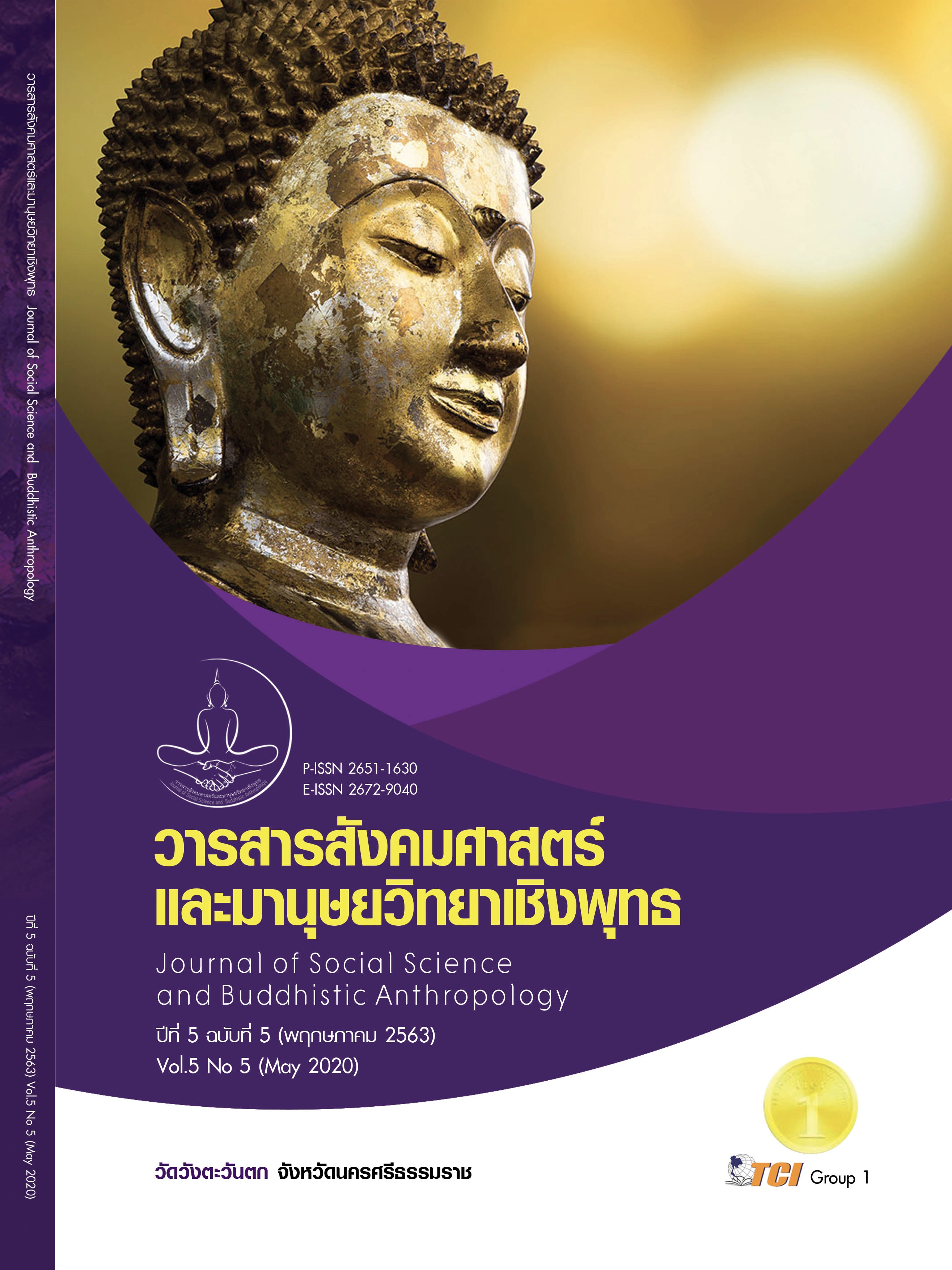SEXUAL DIVERSITY AND REALIZATION IN THERAVÃDA BUDDHIST PHILOSOPHICAL PERSPECTIVE
Keywords:
Sexual Diversity, Realization, Theravãda Buddhist PhilosophicalAbstract
In this article the researcher define objectives of study as follow: 1) To study paradigm and concept of gender diversity 2) To study about the conditions of sex, gender, sexuality that might be the factors in Realization of Absolute Truth on the view of Theravada Buddhist philosophy 3) To analyze and criticize the paradigm and concept of gender diversity in Realization of Absolute Truth in Theravada Buddhist philosophy. This study is the qualitative research that emphasizes on documentary research by studying and collecting primary and secondary documents that relate to the gender diversity. Besides, the research also works on process of analysis and interpretation as Descriptive Paradigm on the topic and presentation. The study found that: 1) Sex does not obstruct the Realization of Absolute Truth. According to Theravada Buddhist philosophy, male and female are the same as gender equality in three aspects as karma equality, wisdom equality and both of male and female are under the same law of the “Three Characteristics of Existence” 2) Gender is not an obstacle to Realization of Absolute Truth in Theravada Buddhist philosophy. All of lay people (upasaka, upasika) and monkhood (bhikkhu, bhikkhuni) have the potential in achieving the Realization of Absolute Truth. 3) Sexuality is only a condition, a restriction, a prohibition, a precaution for lay people and monks who adheres to the celibacy, aims to achieve the Realization of Absolute Truth. Thus, the concept of Theravada Buddhist Philosophy is overcome the paradigm of gender diversity since the Lord Buddha attained the Four Noble Truths. The overcoming of gender diversity leads to the truth in the level of Absolute Truth that beyond time and paradigm.
References
กรมศาสนา. (2525). พระไตรปิฎก (สํ.ม.19/1033/250) . กรุงเทพมหานคร: กรมศาสนา.
นฤพนธ์ ด้วงวิเศษ. (2560). แนวคิดทฤษฎีเรื่อง ความหลากหลายทางเพศ. เรียกใช้เมื่อ 15 ตุลาคม 2561 จาก https://www.sac.or.th/main/th/article/detail/56
ประเวศ อินทองปาน. (2561). สถานภาพและบทบาทของสตรีเพศตามแนวจริยศาสตร์ทางศาสนา. วารสารธรรมธารา , 4(2), 70-71.
มหาจุฬาลงกรณราชวิทยาลัย. (2539). พระไตรปิฎกภาษาไทย ฉบับมหาจุฬาลงกรณราชวิทยาลัย. กรุงเทพมหานคร: โรงพิมพ์มหาจุฬาลงกรณราชวิทยาลัย.
มหามกุฏราชวิทยาลัย. (2536). พระไตรปิฎกและอรรถกถาแปล 91 เล่ม ฉบับมหามกุฏราชวิทยาลัย. กรุงเทพมหานคร : โรงพิมพ์มหามกุฎราชวิทยาลัย.
สิทธิและเสรีภาพของปวงชนชาวไทย. (2560). ราชกิจจานุเบกษา เล่ม 134 ตอนที่ 40 ก หน้า 8 (6 เมษายน 2560).
Jon Binnie. (2004). The Globalization of Sexuality. Sage Publications : London.
Mimi Marinucci. (2010). Queer Alternatives in Feminism is Queer. Zed Books : New York.
Scott J. Michaelsen & David E. Johnson. (2008). Anthropology's Wake: Attending . Fordham University Press: New York.








